In the realm of shock collar for dogs, understanding their purpose and how to use them responsibly is crucial. As an expert in shock collar for dogs, I aim to provide a comprehensive guide on these devices, catering to shock collar for small dogs as well as shock collar for large dogs.
Article Purpose and Scope
This article delves into the nuances of shocking collar for dogs, offering insights into their benefits and considerations. From best shock collar for dogs to shock collar for big dogs, each type serves specific needs, whether for training or behavioral correction. It’s essential for dog owners to grasp these distinctions to make informed choices.
Importance of Understanding Shock Collars Before Use
Before delving into specifics like shock collar for dogs small or shock collar for dog, understanding the technology behind these devices is paramount. The best dog shock collar for large dogs should not only be effective but also safe and humane. My expertise in shock collar and fence for dogs ensures that, you gain practical insights into integrating these collars into their pet training regimen responsibly.
This article aims to demystify remote control shock collar for dogs and similar devices, empowering dog owners to utilize them effectively. By emphasizing safety and proper usage, I strive to equip readers with the knowledge needed to choose the best dog shock collar for barking or any specific training requirement.
Understanding these fundamentals ensures that the use of shock collar for dogs that bark and other training needs aligns with the well-being and development of our canine companions.
What is a Shock Collar for Dogs?
A shock collar for dogs is a training device designed to provide mild, adjustable stimuli to your dog, primarily used for behavior modification and training purposes. It operates through various mechanisms to deliver a corrective response when necessary.
Basic Functionality
When it comes to using a shock collar for dogs, understanding its basic functionality is crucial. These collars are designed to help you train your pet effectively. For smaller breeds, a shock collar for small dogs provides milder stimulation to ensure safety and comfort. If you’re searching for the best shock collar for dogs, consider one with adjustable settings and a remote control. Larger breeds require a shock collar for large dogs with a stronger stimulus. Always choose the best shock collar for large dogs to ensure it’s effective yet safe. Remember, a shocking collar for dogs is a tool, not a punishment, and should be used responsibly.
Types of Shock Collars
Static Shock Collars
Among the most common types, static shock collars deliver a mild electric pulse to discourage unwanted behavior. They are adjustable to suit different sizes and sensitivities, making them versatile for various breeds, including shock collar for small dogs and best shock collar for large dogs.
Vibration Collars
Vibration collars use gentle vibrations as a form of correction. Ideal for sensitive dogs or those responsive to touch, they offer a non-invasive alternative to static shocks.
Ultrasonic Collars
Ultrasonic collars emit high-frequency sound waves that are inaudible to humans but can deter shocking collar for dogs. They are effective for controlling barking and other behavioral issues.
Spray Collars
Spray collars release a burst of citronella or other harmless substances near the dog’s nose, deterring unwanted behaviors without physical stimulation.
Flowchart: Types of Shock Collars and Their Functions
For a visual breakdown of these shock collar for big dogs and their functionalities, refer to the accompanying flowchart. It outlines how each type of collar works and their suitability for specific training needs, such as shock collar for dogs that bark and best dog shock collar for large dogs.
Choosing the right shock collar for dogs nearby involves considering your dog’s temperament, size, and the behavior you wish to correct. Always prioritize humane training methods and consult with a professional if unsure about usage.
Understanding Their Mechanism and Technology
How Do Shock Collars Work?
Shock collars, also known as electric shock collar for dogs, are designed to deliver a mild static electric stimulation to your dog. This sensation is similar to the static shock you might feel from touching a metal object after shuffling your feet on carpet. Shock collar training for dogs relies on this sensation to discourage unwanted behaviors or reinforce positive actions.
Mechanism behind Shock Collars
The technology used in shock collars involves a small electronic device attached to a collar that emits the static correction when triggered. Modern versions often include adjustable levels of stimulation, ensuring it’s safe and effective for different dog shock collar for training needs, from obedience training to addressing specific behaviors like excessive barking or boundary issues.
When your dog engages in undesirable behavior, such as incessant barking or straying beyond designated areas (perimeter shock collar for dogs), you can remotely activate the collar to deliver a brief, harmless static pulse. This immediate feedback helps your dog associate the behavior with the correction, facilitating quicker learning without causing harm.
Technology Used in Shock Collars
The best shock collar for little dogs and larger breeds alike incorporate advanced technology to ensure humane training methods. Features like remote shock collar for dogs allow trainers to deliver corrections from a distance, reinforcing commands effectively during activities like hunting or off-leash training (shock collar for dogs hunting).
For multi-dog households or professional trainers handling multiple animals, models like the shock collar for 2 dogs enable simultaneous training with separate collars and adjustments tailored to each dog’s temperament and learning pace. This versatility extends to anti bark shock collar for small dogs, designed specifically to curb excessive barking without discomfort.
While boundary shock collar for dogs and various types cater to specific needs, the underlying principle remains consistent: using safe, controlled static correction to guide your dog towards better behavior. Understanding the most powerful shock collar for large dogs ensures both effectiveness and ethical treatment in training sessions, fostering a trusting bond between you and your pet.
Graph: Comparison of Shock Intensity Levels Across Different Brands
Benefits of Using Shock Collars
| Benefit | Description |
| Effective Training Tool | Shock collar training for dogs can be an effective method to reinforce commands and discourage undesirable behaviors. It helps in training with a shock collar for dogs by providing immediate feedback. |
| Versatility | Shock collars are versatile and can be used for various purposes, such as shock collar for dogs hunting, anti bark shock collar for small dogs, and perimeter shock collar for dogs. They are suitable for different training needs. |
| Remote Control | Many shock collars come with a remote control feature, like the dog shock collar with remote for large dogs and remote shock collar for dogs, allowing the trainer to administer corrections from a distance. This is particularly useful in outdoor settings. |
| Adjustable Intensity | The strongest shock collar for dogs and best shock collar for large dogs with thick fur often feature adjustable intensity levels, ensuring that the correction can be tailored to the dog’s size and sensitivity. |
| Safety Features | Modern shock collars include safety features such as automatic shut-off and vibration warnings before delivering a shock, making training with a shock collar for dogs safer and more humane. |
| Convenience | The best dog shock collar for small dogs and shock collar for medium dogs are designed for convenience, with easy-to-use settings and ergonomic designs that make them user-friendly for pet owners. |
| Effective Perimeter Control | Shock collar for dogs perimeter and best perimeter shock collar for dogs are effective in establishing boundaries for pets, keeping them safe within designated areas. |
| Suitable for Various Breeds | There are collars designed for different breeds and coat types, such as shock collar for long haired dogs and best shock collar for little dogs, ensuring effective training regardless of the dog’s physical characteristics. |
| Multi-Purpose Use | The shock training collar for dogs and dog shock collar for training are versatile tools that can address multiple training issues, from basic obedience to complex behavior problems. |
Common Misconceptions About Shock Collars
When it comes to shock collars for dogs, there are several misconceptions that often cloud judgment. As an expert in dog training, it’s crucial to address these misconceptions to ensure safe and effective use of shock collars.
Potential Risks and Concerns
Physical harm to dogs
One of the primary concerns surrounding shock collars is the potential for physical harm. Critics argue that the electric stimulation can cause pain and discomfort, especially if not used correctly. However, modern shock collars like the PetSafe shock collar for dogs are designed with adjustable settings to minimize such risks. It’s essential for dog owners to consult with a professional trainer to learn proper usage techniques.
Psychological effects
Another misconception is regarding the psychological impact on dogs. People often worry that shock collars can lead to fear or anxiety in dogs, affecting their overall well-being. However, when used responsibly and paired with positive reinforcement, shock collars can actually aid in training by providing immediate feedback. Models like the wireless shock collar for dogs offer remote control capabilities, allowing trainers to correct behaviors effectively without causing undue stress.
Ethical Considerations
The ethics of using shock collars vary widely among dog owners and trainers. Some argue that any form of electric stimulation is inhumane, while others advocate for its use in training aggressive or stubborn dogs. The key lies in understanding your dog’s temperament and training needs, and selecting the best dog shock collar that suits both.
While there are valid concerns about shock collars for dogs, addressing these through informed training practices and ethical considerations is crucial. By debunking misconceptions and focusing on safe usage, shock collars can be a valuable tool in dog training, helping to foster better communication and behavioral improvement in dogs of all sizes and breeds.
Choosing the Right Shock Collar for Dogs
When deciding on a shock collar for dogs, several factors come into play to ensure it suits your needs and your dog’s requirements.
Factors to Consider When Selecting a Shock Collar
Dog’s Size and Temperament
First and foremost, consider your dog’s size and temperament. A shock collar for small dogs will differ significantly from one designed for larger breeds. Temperament matters too; a strong shock collar for dogs may be necessary for more stubborn or aggressive dogs.
Training Goals
Your training goals will dictate the type of shock collar you choose. Whether you’re addressing barking issues or reinforcing commands, selecting the best shock collar for dogs aligns with your training objectives.
Collar Features
Look for specific collar features such as vibration shock collar for dogs if you prefer gentler corrections, or perhaps a remote control shock collar for dogs for precise training sessions. For long-haired dogs, ensuring the best shock collar for long haired dogs avoids interference with fur.
Top Recommended Brands and Models
To simplify your search, consider top recommended brands known for their reliability and effectiveness. Explore models that cater to your needs, whether you require the best shock collar for multiple dogs or a hunting shock collar for dogs.
Hawpet Dog Shock Collar 49(5)
Key Features:
- Four humane training modes
- Extended 4000ft remote range
- IPX7 waterproof receiver
- Adjustable nylon collar fits most dogs
- Quick Type-C charging, long battery life
I recently tested a shock collar that has become a favorite. It’s the strongest shock collar for dogs I’ve tried. What impressed me the most is its 4000FT range, making it the best perimeter shock collar for dogs. If you have a large dog with thick fur, this is hands down the best shock collar for large dogs with thick fur.
One standout feature is its ability to handle multiple dogs. If you’re looking for a dog shock collar for 2 dogs, this model’s 4-channel function allows simultaneous training. The remote shock collar for big dogs works flawlessly, providing accurate commands quickly.
Living in an area where options are limited, I often searched for a shock collar for dogs near me. This product can be easily found online and shipped swiftly. It includes a shock collar for dogs with remote, which is user-friendly with its large LED interface.
Pros:
- Effective training with multiple modes.
- Long-distance remote operation.
- Durable in various weather conditions.
- Comfortable fit for different dog sizes.
- Fast charging and extended battery life.
Cons:
- High initial learning curve.
- May be too intense for sensitive dogs.
Jugbow Dog Training Collar
Key Features:
- 4 humane training modes
- 3300FT range, dual-channel
- IPX7 waterproof design
- Quick 2-hour charging
- Comfortable nylon strap
As someone who has extensively tested the waterproof shock collar for dogs, I can confidently recommend it for effective training. It boasts 4 humane modes: beep (with 1-8 levels), vibration (1-16 levels), safe shock (1-99 levels), and Shock Boost (10% higher), ensuring you can tailor the correction to your dog’s needs. With an impressive range of 3300FT and dual-channel capability, you can train two dogs simultaneously in various environments like the park or beach without signal loss. The collar, designed for dogs weighing 10-120lbs, features a comfortable, adjustable nylon strap that fits snugly. Its IPX7 waterproof rating guarantees durability in any weather, while the quick-charging technology ensures minimal downtime. The receiver’s security on/off switch prevents accidental activation, adding to its safety features. If you’re looking for the best shock collar for hunting dogs or any active breed like the German Shepherd, this collar stands out for its reliability and versatility.
Pros:
- Effective for behavior correction.
- Long-range and dual-channel capability.
- Durable in all weather conditions.
- Fast charging with long battery life.
- Comfortable fit for all sizes.
Cons:
- Complex mode settings for beginners.
- Higher initial investment cost.
PetSafe Stubborn Dog 214
Bousnic Dog Shock Collar 49
PIOUNS Dog Shock Collar 28
DOG CARE Dog Training Collar 29
Dog Shock Collar
INVIROX Dog Shock Collar 49
Comparison of Top Shock Collar Brands
Referencing a comparison table of top shock collar brands can further guide your decision-making process. This table provides a quick overview of features, prices, and customer reviews, helping you make an informed choice.
By focusing on these key aspects—dog’s size and temperament, training goals, collar features, and top recommended brands—you’ll find the best shock collar for your dog, tailored to your specific training needs and preferences.
Proper Use of Shock Collars
Using a shock collar can be a helpful training tool if used properly. The key is to ensure you’re using it safely and effectively, especially for different dog sizes and behaviors.
Step-by-Step Guide to Using a Shock Collar
- Choose the Right Collar: Select the shock collar for very small dogs if you have a tiny breed. For larger breeds, opt for the strongest shock collar for large dogs or a training shock collar for large dogs.
- Fit the Collar Properly: Make sure the collar is snug but not too tight. Check if it’s appropriate for the dog age for shock collar use, usually recommended for dogs over six months.
- Start on the Lowest Setting: Always begin with the lowest shock setting. Test the collar on yourself first to understand its impact.
- Monitor Your Dog’s Reaction: Observe your dog’s response. If your dog is uncomfortable or anxious, adjust the settings accordingly.
Dos and Don’ts of Shock Collar Training
Do:
- Use the collar as a part of a comprehensive training program.
- Reward good behavior to reinforce positive actions.
- Consider a dog shock collar for large dogs with remote for precise control, especially for bark shock collar for large dogs or dog shock collar for yard training.
Don’t:
- Never leave the collar on your dog for extended periods.
- Avoid using the collar on puppies younger than six months.
- Don’t use high settings immediately; start low to avoid causing fear or pain.
Flowchart: Steps to Using a Shock Collar Safely
- Identify the Training Need: Determine if your dog needs a shock collar for dogs chasing cars or a shock bark collar for dogs.
- Select the Appropriate Collar: Consider factors like size and behavior. For example, an electric shock collar for small dogs or an invisible fence shock collar for dogs.
- Test the Collar: Check it on yourself before placing it on your dog.
- Begin Training: Start with low settings and observe your dog’s reaction.
- Adjust as Needed: Based on your dog’s response, adjust the settings. For tough fur, a shock collar for dogs with thick fur may be necessary.
- Review and Refine: Continue to monitor and adjust your approach to ensure effective training.
For those asking, “what’s the best shock collar for dogs,” or “where can I buy a shock collar for a dog,” many pet stores and online retailers, like shock collar for dogs tractor supply, offer various options. Some popular brands include the Bousnic shock collar for dogs and options for specific needs like the shock collar for hunting dogs or the long range shock collar for dogs.
The proper use of a shock collar involves careful selection, starting at low settings, and monitoring your dog’s reaction closely. By following these steps and being mindful of your dog’s needs, you can effectively and humanely use a shock collar for training.
Alternatives to Shock Collars
When considering training methods for your dog, there are several alternatives to shock collars that can be both effective and humane. While a shock collar for a dog might seem like a quick fix, exploring other methods can yield long-term benefits without the risks associated with shock collars.
Positive Reinforcement Training
Positive reinforcement training is a highly recommended approach. This method involves rewarding your dog for good behavior, which encourages them to repeat it. Instead of using a shock collar for hunting dogs or an automatic shock collar for small dogs, you can use treats, praise, or toys to reinforce positive actions. This method fosters a trusting relationship between you and your dog.
Clicker Training
Clicker training is another effective alternative. It uses a small device that makes a clicking sound to signal to your dog that they have done something right. This method is beneficial for all dog sizes, from those you might consider a shock collar for small dogs petsmart to larger breeds. Clicker training can replace the need for a shock collar with remote for dogs by providing a clear and consistent way to communicate with your pet.
Head Halters and Harnesses
For dogs that pull on the leash, head halters and harnesses can be excellent tools. These devices allow you to control your dog’s movements gently and effectively, making them a good alternative to a waterproof shock collar for large dogs. Head halters and harnesses can be found at many pet stores, including tractor supply shock collar for dogs sections.
Graph: Effectiveness of Alternative Training Methods
A graph showing the effectiveness of these alternative training methods compared to the best dog shock collar for training can provide a visual representation of how humane methods stack up against shock collars. For instance, while a bark collar for small dogs – no shock offers a more gentle solution, it can be equally effective as a dog shock collar for large dogs when used correctly.
In conclusion, while the top rated shock collar for dogs may offer a quick solution, exploring alternatives like positive reinforcement, clicker training, and using head halters or harnesses can lead to a happier and healthier training experience for both you and your dog.
Real-Life Experiences and Testimonials
Success Stories from Dog Owners
In my experience, many dog owners have shared incredible success stories about using shock collars. One common concern is when the dog fur is too thick for shock collar effectiveness. However, I’ve found that with the right adjustment and consistent use, even dogs with the thickest fur can respond well. For instance, Sarah, a friend of mine, was struggling with her Husky. She was initially skeptical, but after finding a dog shock collar for large dogs specifically designed for thick fur, she saw remarkable improvements in her dog’s behavior.
Expert Opinions from Veterinarians and Trainers
Veterinarians and professional trainers often recommend shock collars for specific situations. According to Dr. James, a veterinarian, a shock collar for large stubborn dogs can be a game-changer. It provides a safe and effective way to manage challenging behaviors. Trainers also agree that a shock collar for stubborn dogs can help reinforce commands and ensure the safety of the dog and others. In some cases, an electric shock collar fence for dogs or a shock collar for dogs fence setup is ideal for keeping dogs within safe boundaries.
A Comprehensive Look at a Successful Shock Collar Training Program
Let’s take a closer look at a comprehensive training program using shock collars. John, a professional dog trainer, had a client with a particularly stubborn Great Dane. They opted for a strong shock collar for big dogs and a shock collar system for dogs. The results were impressive. With a combination of consistent training and the right equipment, including a shock collar with GPS for dogs to track the Great Dane, they managed to curb the dog’s undesirable behaviors.
In another case, a small dog owner found success with a shock collar for little dogs and a shock collar for small dogs Walmart had available. Even with small breeds, the key is to use the collar correctly and under the guidance of a professional.
From proximity-based systems like a proximity shock collar for dogs to options available online, such as a dog shock collar for sale, the variety ensures there is a solution for every need. Whether for training or maintaining safe boundaries, a shock collar for dogs training is an effective tool when used responsibly.
FAQs
How tight should a dog collar be?
When fitting a shock collar on a dog, it’s crucial to ensure it is snug but not too tight. A well-fitted collar ensures the device functions correctly and prevents discomfort or injury to the dog. Here are some key guidelines to follow:
Fitting a Dog Collar
- Snug Fit, Not Tight: The collar should fit snugly around your dog’s neck but not so tight that it causes discomfort. The general rule is that you should be able to fit two fingers comfortably between the collar and your dog’s skin. This ensures the collar is secure without being too tight.
- Proper Placement: Position the collar high on the dog’s neck, just below the jaw and above the shoulder blades. This placement ensures the device makes proper contact with the skin, which is essential for it to work effectively.
- Check for Comfort: After fitting the collar, observe your dog for any signs of discomfort, such as excessive scratching or agitation. If your dog seems uncomfortable, adjust the collar’s fit accordingly.
- Regular Checks: Regularly check the collar’s fit, especially if your dog is still growing or losing weight. A collar that was fitted correctly a few weeks ago might need adjustment now.
- Avoid Prolonged Use: Do not leave the collar on for extended periods. Prolonged use can cause irritation or pressure sores. Follow the manufacturer’s guidelines for the recommended duration of use.
Why Proper Fit Matters
A collar that is too tight can cause pain, restrict breathing, and potentially lead to serious injuries such as skin irritation, pressure necrosis, or tracheal damage. On the other hand, a collar that is too loose might not function correctly, causing inconsistent training signals and potentially slipping off.
Final Tips
- Always follow the manufacturer’s instructions for fitting and using the shock collar.
- Consult with a professional dog trainer if you are unsure about the correct fit or use of the collar.
- Ensure your dog is comfortable and responds well to the collar before using it for training purposes.
How to adjust dog collar ?
Properly adjusting your dog’s collar is crucial for their safety and comfort. A well-fitted collar ensures that your dog is secure without causing any discomfort. Here are the steps to adjust your dog’s collar correctly:
Choose the Right Collar
First, select a collar that is appropriate for your dog’s size and breed. Ensure the collar is made of durable materials and is adjustable.
Measure Your Dog’s Neck
Using a flexible measuring tape, measure around the base of your dog’s neck. Add two inches to this measurement to ensure a comfortable fit. This will be the ideal collar size.
Position the Collar
Place the collar around your dog’s neck. Make sure the collar sits comfortably, neither too high up near the jawline nor too low down near the shoulders.
Adjust the Fit
To adjust the collar:
- Buckle Collars: If you have a buckle collar, use the adjustment holes to find the best fit. Slide the buckle until the collar fits snugly.
- Quick-Release Collars: For quick-release collars, adjust the sliding mechanism until the collar is secure.
Check for Comfort
After adjusting, perform the “two-finger test”:
- Slide two fingers under the collar. If they fit comfortably, the collar is properly adjusted. If it’s too tight to slide your fingers, loosen the collar. If there’s too much room, tighten it.
Ensure Proper Function
For specific types of collars, such as shock collars, ensure that the prongs or contact points are in proper contact with your dog’s skin but not causing any discomfort. The collar should sit firmly but not too tight, allowing for effective function without harming your dog.
Regular Checks
Regularly check the fit of the collar, especially for growing puppies. Adjust as needed to ensure it remains comfortable and secure.
Tips for Success
- Avoid Over-Tightening: A collar that is too tight can cause discomfort or injury.
- Proper Positioning: Ensure the collar is not too loose, which could lead to slipping off, or too tight, which could restrict breathing.
- Inspect for Wear and Tear: Regularly inspect the collar for any signs of wear and tear and replace it as necessary.
How to clean a dog collar ?
Maintaining a clean dog collar is essential for your pet’s hygiene and comfort. Over time, collars can accumulate dirt, bacteria, and odors. Regular cleaning ensures the collar remains a healthy accessory for your dog. Here’s a step-by-step guide on how to clean a dog collar effectively:
Materials Needed
- Mild dish soap or pet-safe detergent
- Soft brush (e.g., toothbrush)
- Bowl of warm water
- Towel
Instructions
- Remove the Collar: Take the collar off your dog to ensure a thorough cleaning and to avoid any discomfort to your pet.
- Pre-Clean: If the collar has any visible dirt or debris, brush it off with a soft brush to make the cleaning process easier.
- Soak in Soapy Water: Fill a bowl with warm water and add a few drops of mild dish soap or pet-safe detergent. Submerge the collar in the soapy water and let it soak for about 15-20 minutes. This will help to loosen any dirt and grime.
- Scrub the Collar: After soaking, use the soft brush to gently scrub the collar. Pay special attention to any particularly dirty areas, such as spots where the collar might have contact with your dog’s skin or where the tags hang.
- Rinse Thoroughly: Once you’ve scrubbed the collar, rinse it thoroughly under running water to remove all soap residue. Soap left on the collar can irritate your dog’s skin, so make sure it’s completely rinsed off.
- Dry Completely: Pat the collar dry with a towel and then let it air dry completely before putting it back on your dog. Avoid using a dryer as the heat might damage certain materials like leather or synthetic fibers.
Tips
- Leather Collars: For leather collars, use a leather cleaner and conditioner instead of water and soap to prevent drying out and cracking.
- Regular Cleaning: Clean your dog’s collar regularly, ideally once a month, to maintain hygiene.
- Check for Wear and Tear: While cleaning, inspect the collar for any signs of wear and tear. Replace the collar if it’s damaged to ensure your dog’s safety.
Keeping your dog’s collar clean not only helps in maintaining their overall hygiene but also prolongs the life of the collar. A clean collar ensures your furry friend stays comfortable and stylish.
Is a shock collar bad for dogs ?
The use of shock collars for dog training is a topic of considerable debate among pet owners, trainers, and veterinarians. Understanding the pros and cons of shock collars is essential for making an informed decision about their use. Here, we’ll explore the potential negative impacts of shock collars on dogs.
Potential Negative Impacts
Physical Pain and Discomfort
- Pain Response: Shock collars deliver an electric current to the dog’s neck, causing pain and discomfort. This can be particularly distressing for dogs with a low pain threshold or those experiencing health issues.
- Skin Irritation: Prolonged use can lead to skin irritation, burns, or infections at the contact points where the collar touches the skin.
Psychological Effects
- Fear and Anxiety: The sudden and unexpected shocks can create a sense of fear and anxiety in dogs. This can lead to a generalized fear response where the dog becomes anxious in various situations, not just those involving the shock collar.
- Behavioral Issues: Instead of learning positive behaviors, dogs may develop behavioral issues such as aggression, increased anxiety, or learned helplessness. They might associate the pain with various stimuli in their environment, leading to unpredictable and undesirable reactions.
Lack of Positive Reinforcement
- Negative Association: Shock collars rely on negative reinforcement (the removal of an aversive stimulus) or punishment (the presentation of an aversive stimulus), which can be less effective than positive reinforcement methods. Dogs trained with positive reinforcement tend to exhibit better long-term behavior as they associate training with rewards and positive outcomes.
Misuse and Overcorrection
- Inconsistent Use: Inexperienced or inconsistent use of shock collars can lead to overcorrection or incorrect timing of shocks, which confuses the dog and exacerbates fear and anxiety.
- Incorrect Settings: Setting the shock intensity too high can cause undue pain and stress, while too low a setting may be ineffective, leading to overuse and further stress.
Ethical Concerns
- Humane Treatment: Many animal welfare organizations and experts advocate for humane training methods that do not involve pain or fear. They argue that there are more effective and kinder ways to train dogs that foster trust and a stronger bond between pet and owner.
Alternative Training Methods
Given the potential downsides of shock collars, many trainers and behaviorists recommend alternative methods such as:
- Positive Reinforcement Training: Rewarding desired behaviors with treats, praise, or play.
- Clicker Training: Using a clicker to mark desired behaviors followed by a reward.
- Behavioral Adjustment Training (BAT): Focusing on building positive associations and reinforcing good behavior in the presence of triggers.
While shock collars can be effective in some situations, the potential physical and psychological harm they can cause makes them a controversial choice. Considering the availability of humane and effective alternative training methods, many experts advise against the use of shock collars. If you are considering using one, it is crucial to consult with a professional dog trainer or behaviorist to ensure the well-being and safety of your dog.
Is a shock collar good for a dog?
When considering whether a shock collar for dogs is appropriate, it’s important to weigh the potential benefits and drawbacks. A shock collar for dogs can be a useful training tool when used correctly, particularly for addressing specific behavioral issues such as excessive barking or wandering.
For those with smaller pets, a shock collar for small dogs. I can provide a convenient and accessible suggestion. This type of collar is designed to deliver a milder correction suitable for smaller breeds, ensuring their safety while effectively discouraging unwanted behaviors.
For more challenging cases, such as highly independent or resistant breeds, a shock collar for stubborn dogs might be necessary. These collars typically offer adjustable intensity levels to tailor the correction to the dog’s temperament, making training more efficient and humane.
Advanced training devices like a shock collar system for dogs often come with multiple functionalities, including remote controls, various modes (like beep, vibrate, and shock), and sometimes even integrated GPS features. A shock collar with GPS for dogs can be particularly beneficial for owners who want to track their pet’s location, providing peace of mind in addition to training assistance.
Owners of larger breeds may find that a strong shock collar for big dogs or the best shock collar for large dogs is essential to effectively manage their pets. These collars are designed to deliver stronger corrections suitable for bigger and more powerful dogs, ensuring their safety and obedience.
It’s also crucial to maintain the functionality of your training device. Using 6 volt batteries for dog shock collar ensures that the collar remains operational and effective when you need it.
For specific issues like excessive barking, an anti bark shock collar for large dogs or an automatic shock collar for large dogs can provide a solution by delivering a correction without the owner’s constant intervention. These collars can automatically detect barking and administer a pre-set correction to discourage the behavior.
In areas where a dog’s movement needs to be restricted, an area shock collar for dogs can establish boundaries that the pet is trained not to cross, thus preventing potential dangers without the need for physical barriers.
For a less invasive approach, a beep vibrate shock collar for dogs might be a suitable option. These collars typically use sound and vibration as initial corrections before resorting to shock, making them a gentler alternative for sensitive or timid dogs.
A shock collar for dogs can be an effective training tool when chosen and used appropriately. It’s essential to select the right type of collar for your dog’s size and temperament, whether it’s a shock collar for small dogs Walmart or the best shock collar for large dogs. Always ensure the device is in good working order with the correct 6 volt batteries for dog shock collar and use it as part of a comprehensive training program that prioritizes your pet’s well-being.
Conclusion
Understanding how to use a shock collar for a dog responsibly is paramount for effective and humane training. A good shock collar for dogs should prioritize safety, featuring adjustable settings and remote controls for precision. It’s important to select the appropriate collar for your dog’s size and coat type, such as a medium shock collar for dogs or a shock collar for dogs with long hair. Misconceptions like “is shock collar bad for dogs” arise from misuse; proper education and responsible usage ensure benefits outweigh potential downsides. Ultimately, whether using a remote control shock collar for small dogs or a robust training device, the key is balanced, informed application for a harmonious pet-owner relationship.
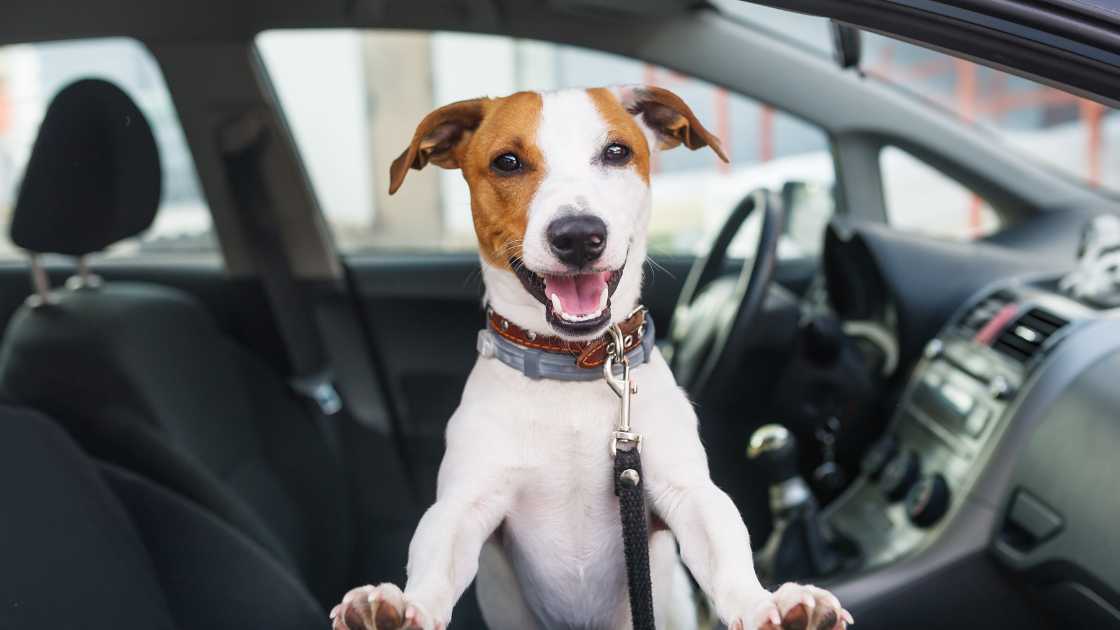
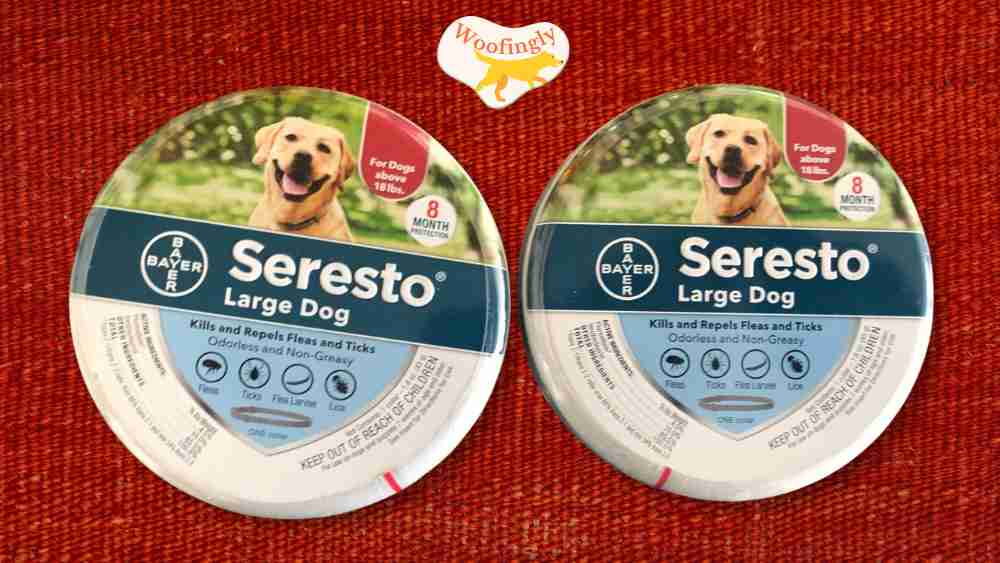
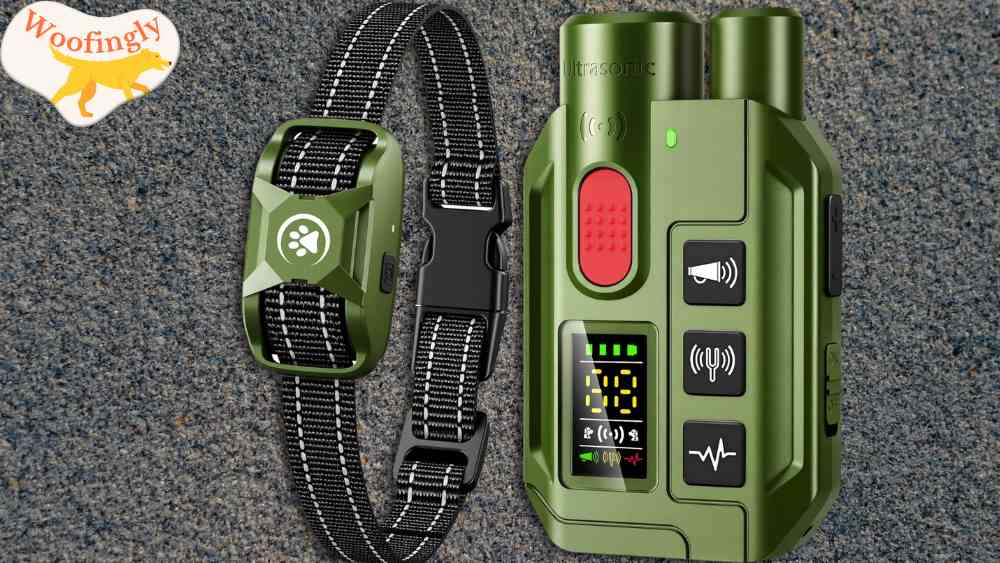
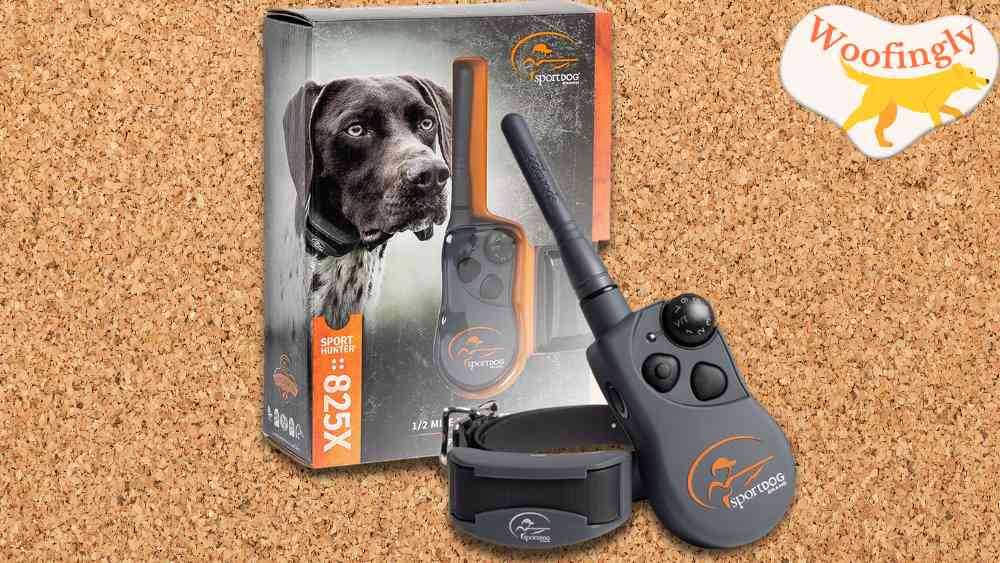
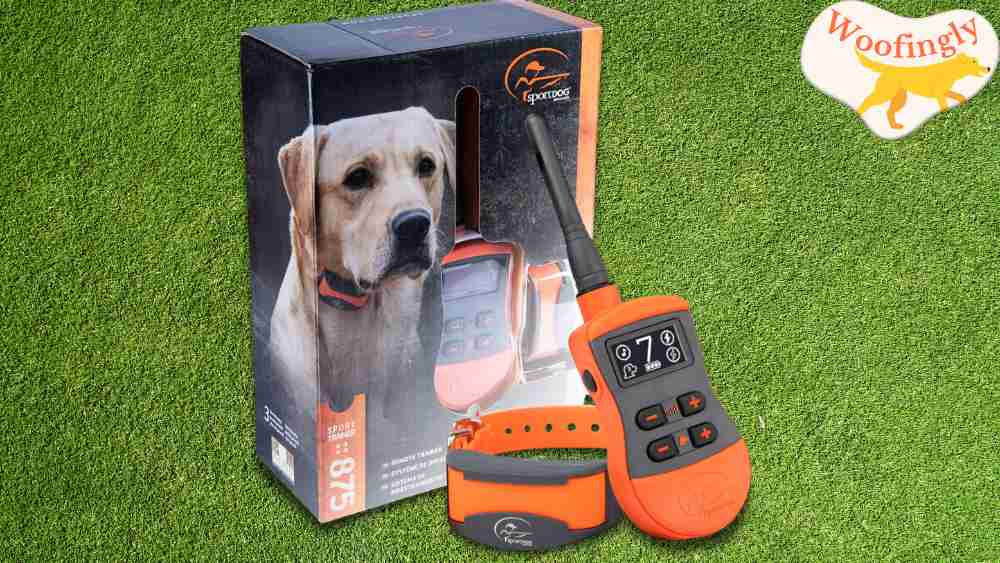
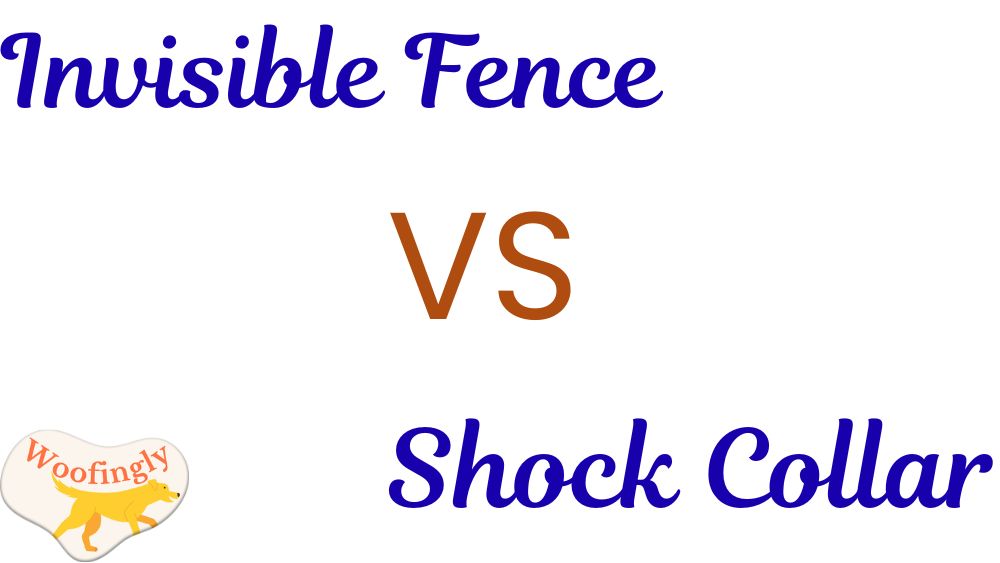
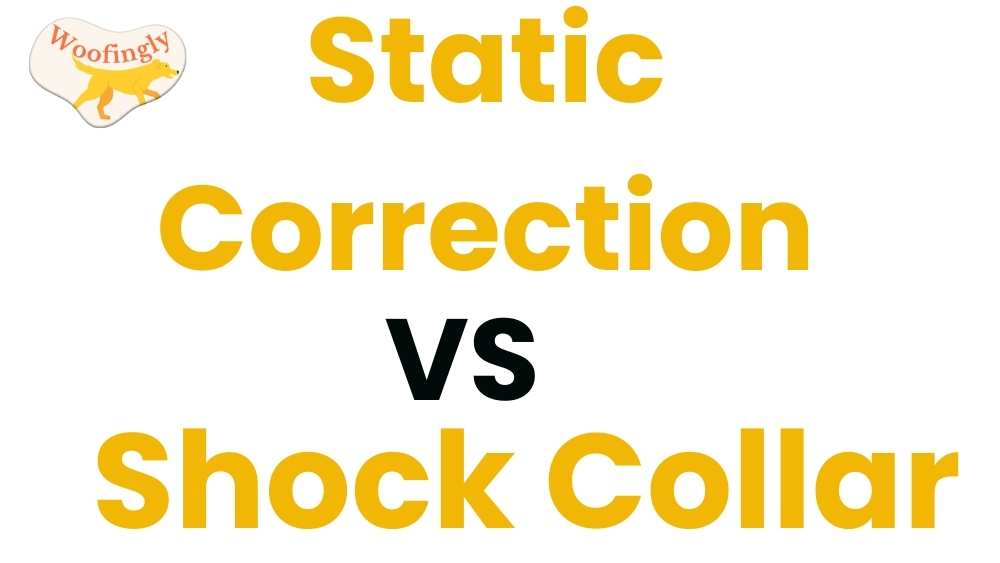
Leave a Reply